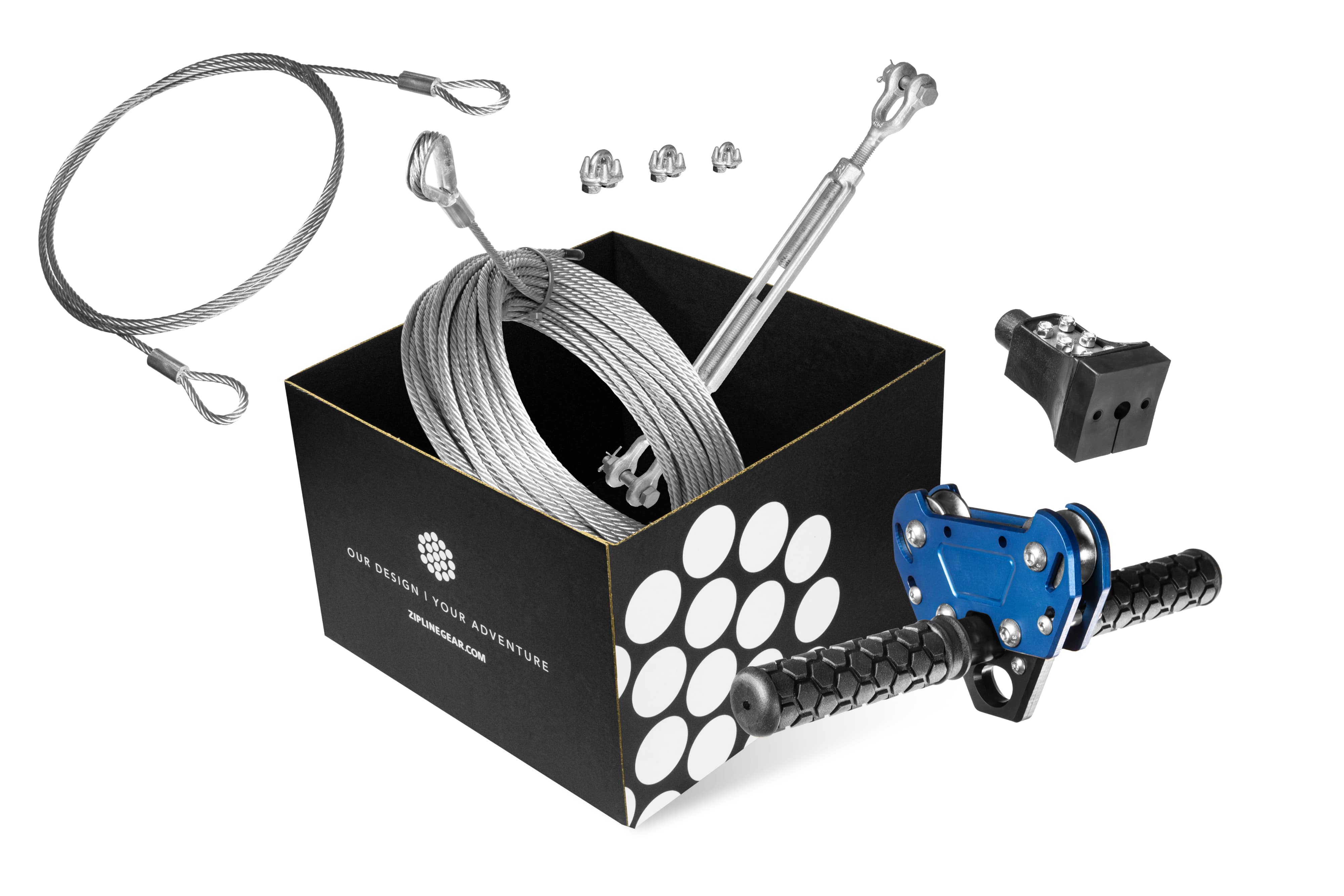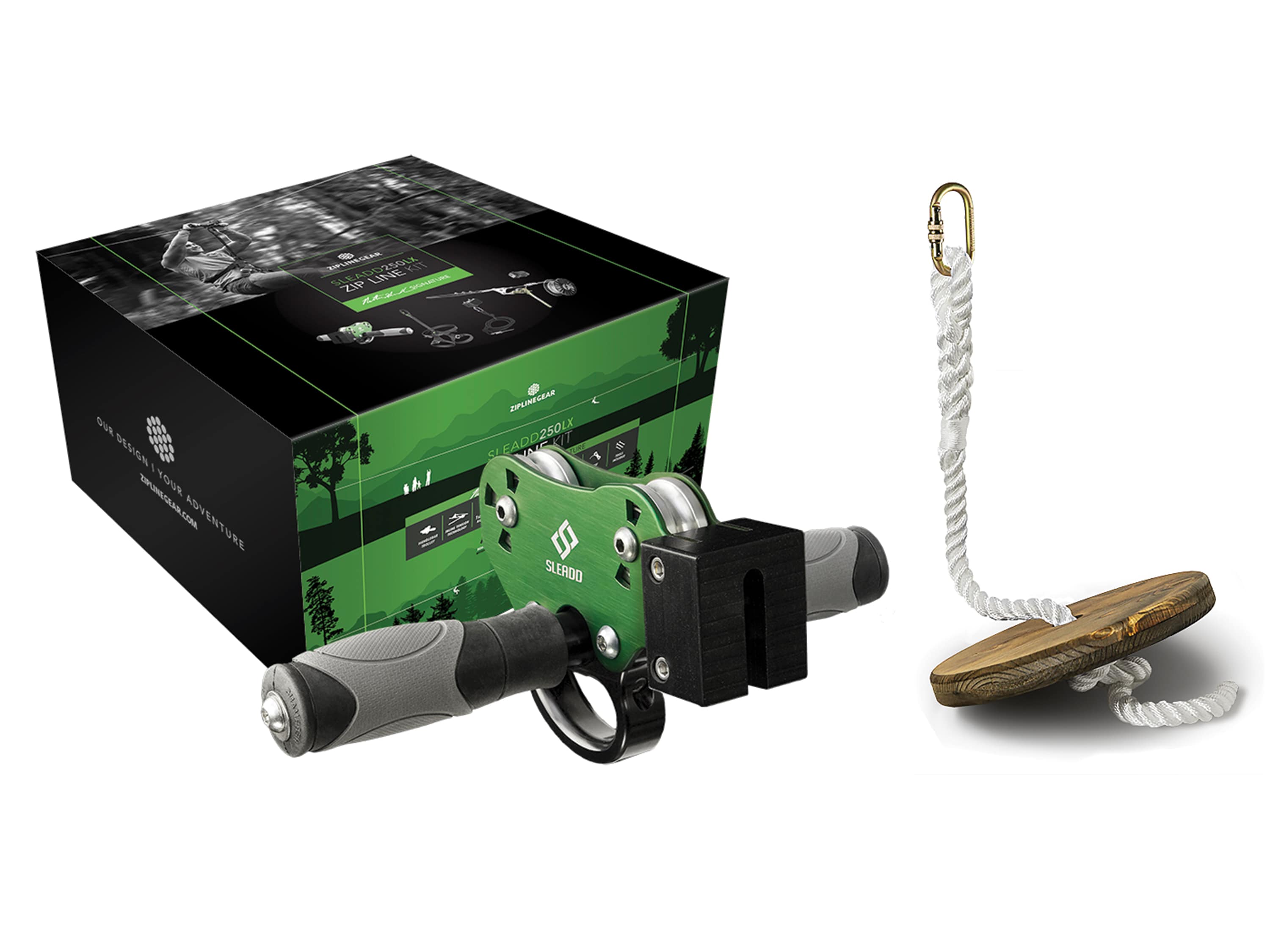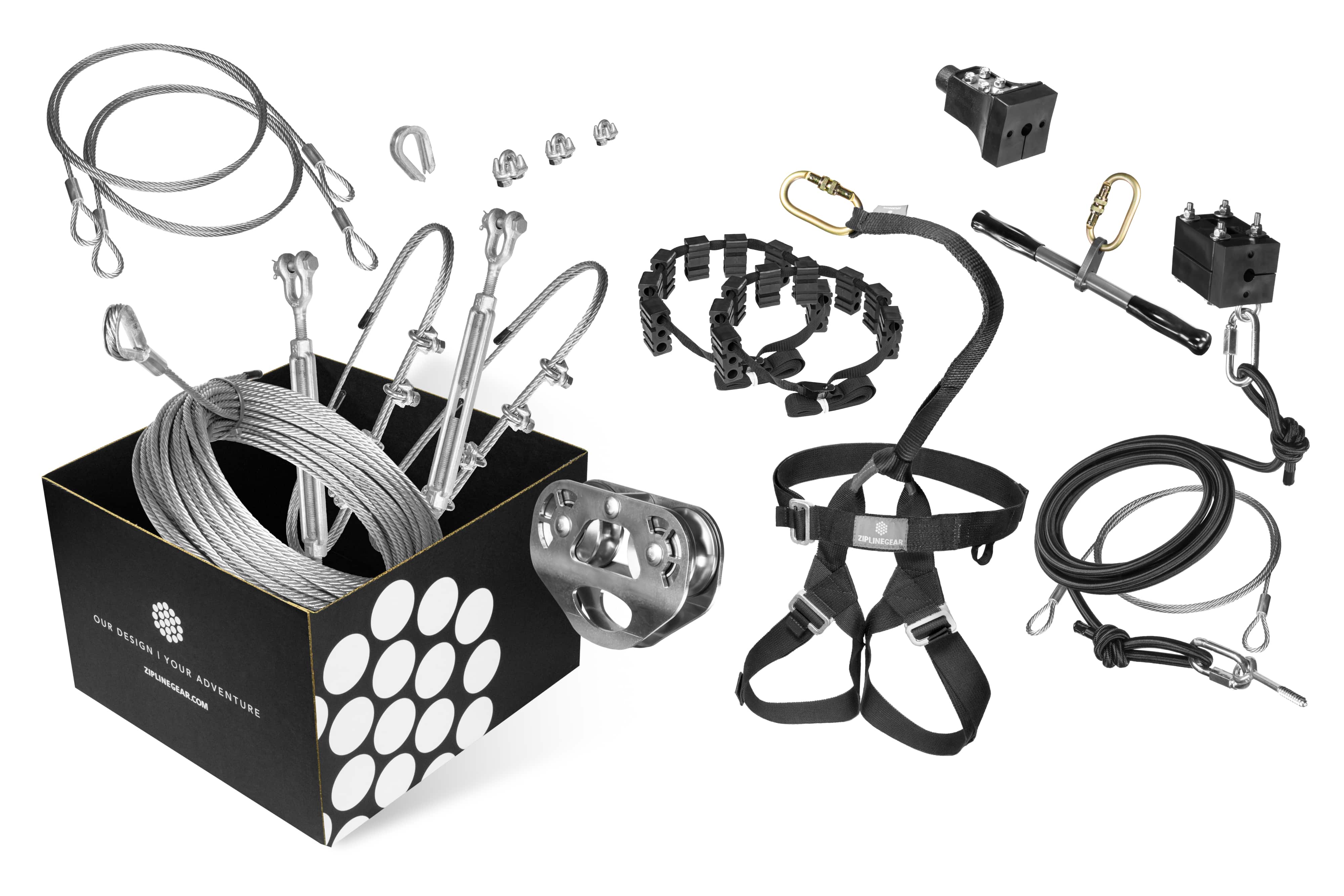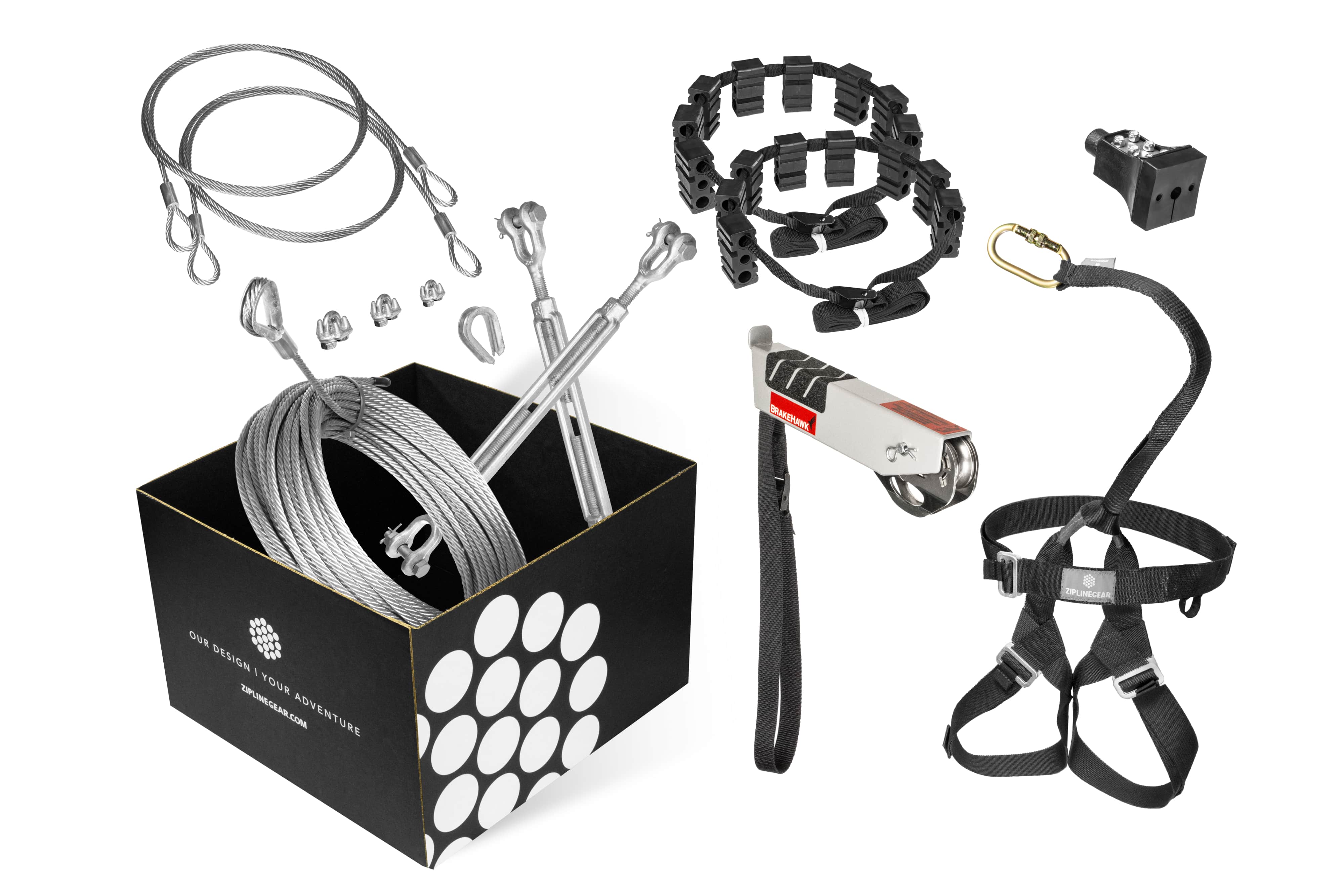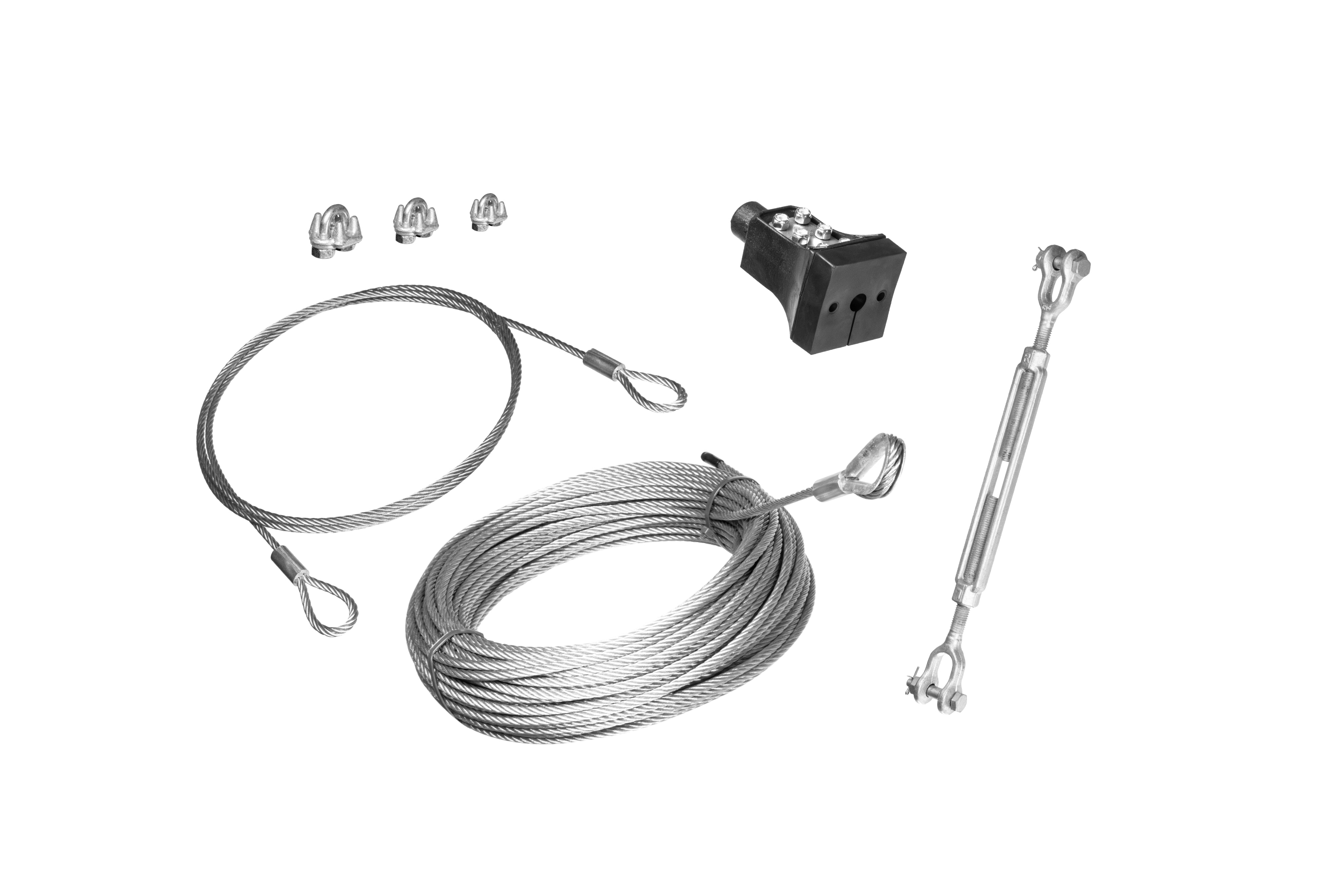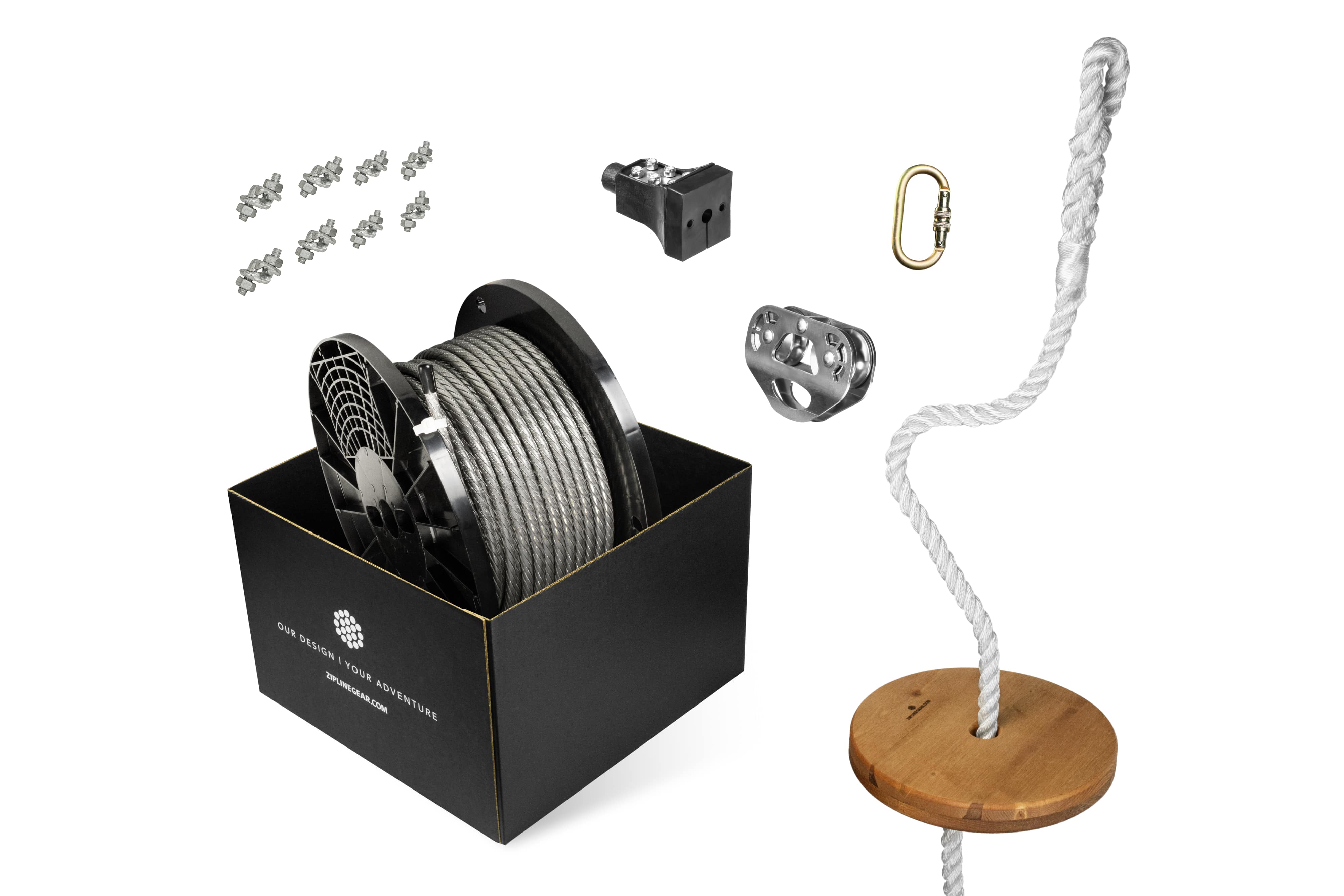Taking Measurements for a Zip Line Project
What are the tools and methods for taking measurements for my zip line?
In planning out your zip line installation, you will need to take a few measurements in order to determine how much cable you will need and where the anchor points will be. Here are a couple tools and methods that might save you some time:
Tape Measures: A standard tape measure is great for measuring vertical distances, and can be indexed over a long distance to determine the total length of your zip line. Most hardware stores also carry extra long tape measures up to 300’, as well as measuring wheels that can be rolled along the ground to get an approximate distance.
Pacing: Use a tape measure to figure out the length of your pace. For example, if 10 steps gets you a distance of 27’, then each of your steps is about 2.7’. You can then pace out your zip line run, multiplying your steps by 2.7 to get the approximate total length of the run.
Sight Levels: Sight levels are used to establish a reference point at both ends of your zip line that are at the same elevation. For detailed instructions, check out our video guide on Using a Sight Level. A standard construction level can also be used, simply by looking along the edge of the level from one end of the span and finding a visual reference point on the opposite end at the same height. If you really want to get fancy making your own sight level, attach a scope to a construction level and use the crosshairs to pinpoint the reference.
Google Earth, GPS devices, or GPS apps on a smartphone can also be used to approximate the distances and elevation changes. GPS will typically give you a sea level reading at each end, subtracting the higher elevation from the lower will give you the elevation change over your zip line span. Watch our Google Earth Video Guide for more information.
Keep in mind that all measurements and calculations are for planning purposes, and should only be used as a starting point during the installation process. Every zip line must be tested and adjusted as needed to ensure safe operation before anyone is allowed on the ride.
- Choosing a selection results in a full page refresh.
